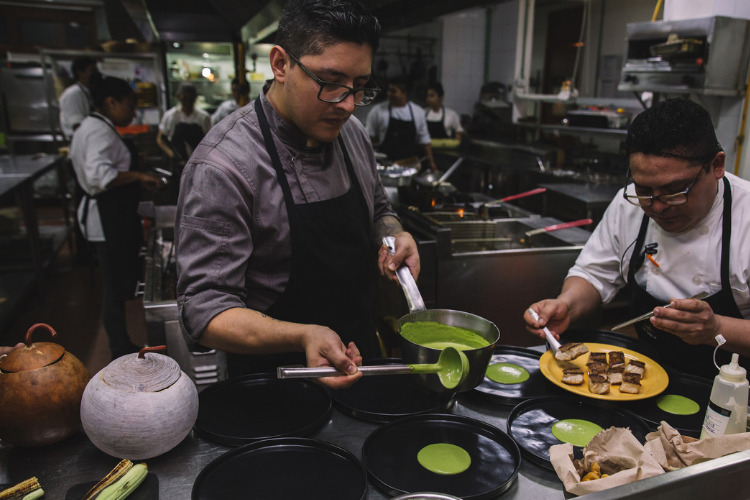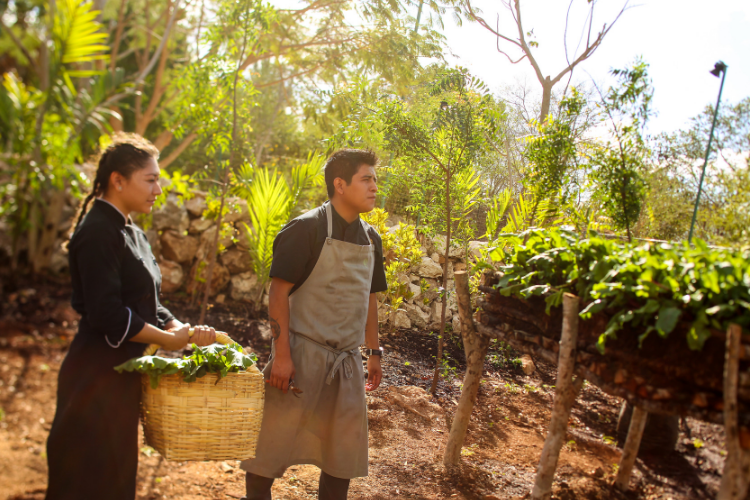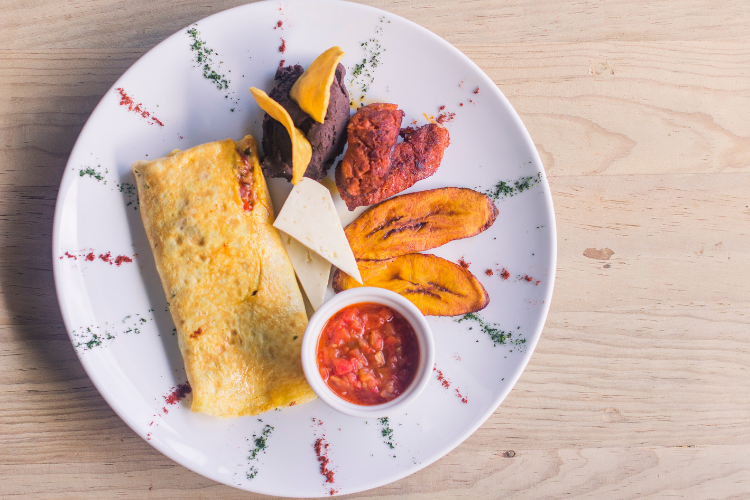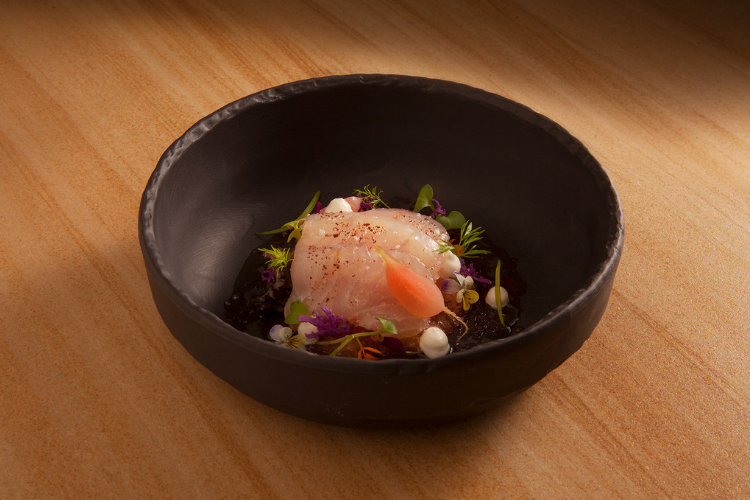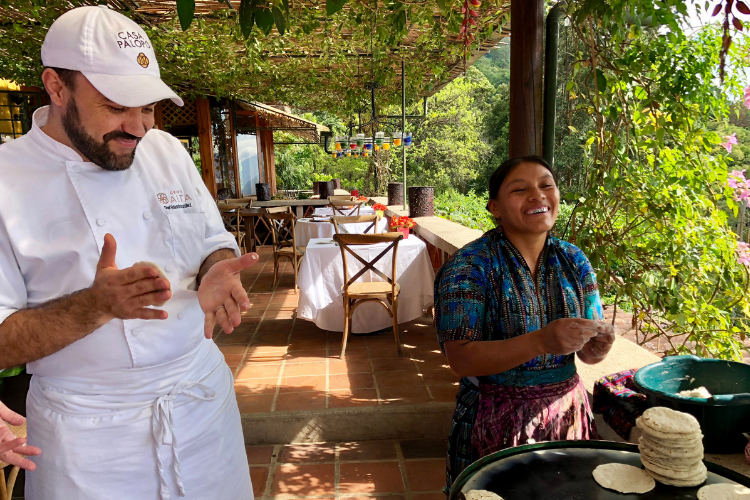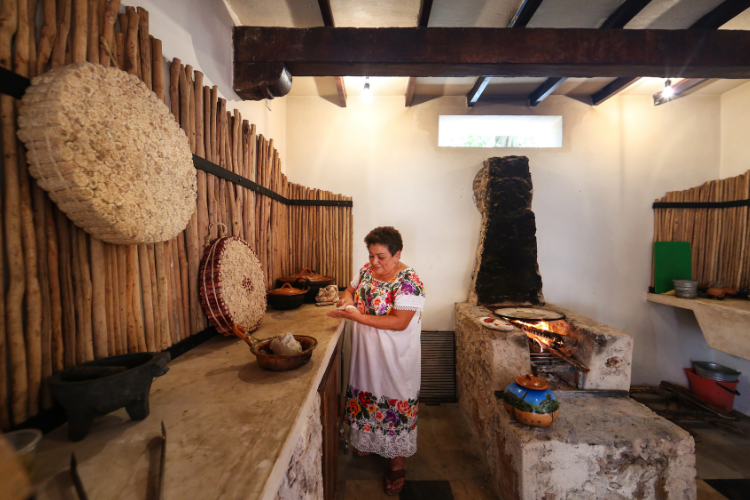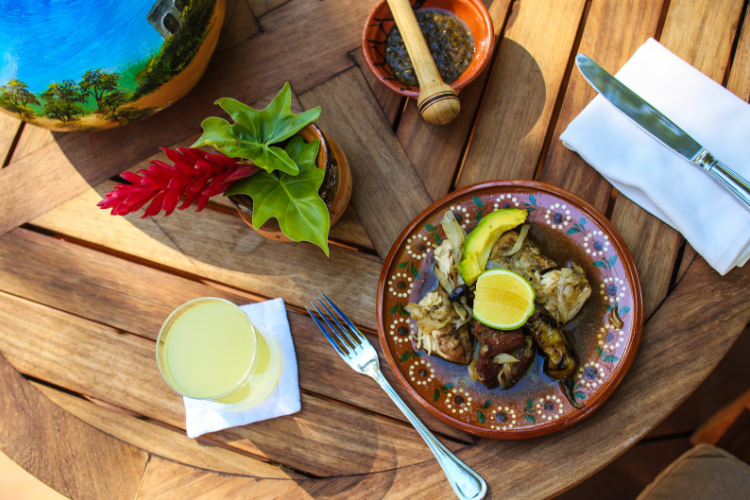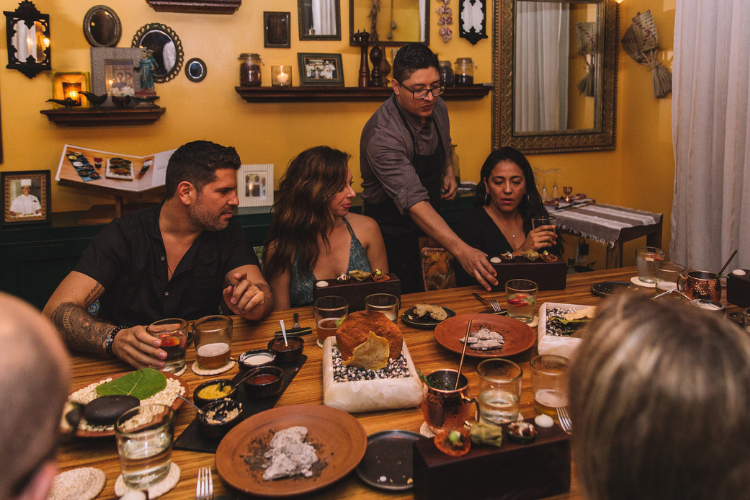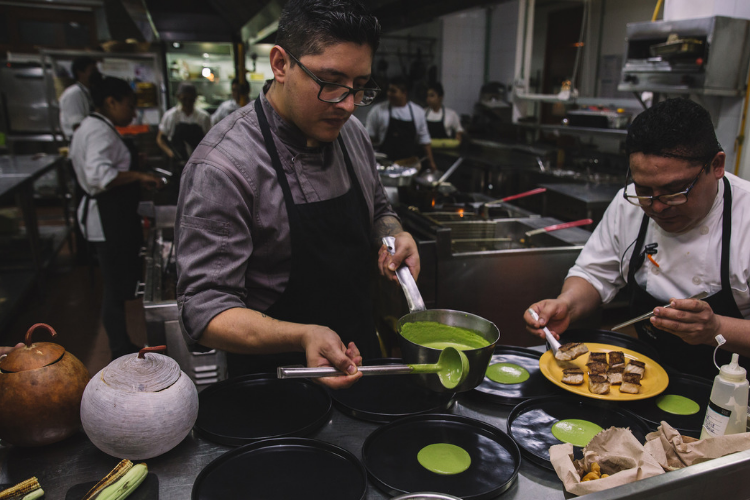Explore Innovative And Authentic Mayan Cuisine At These Resorts
The Mayan civilization, which dominated Mesoamerica for about 2,700 years, disappeared somewhat mysteriously around A.D. 900, leaving behind not just artifacts — jade treasures, calendars, pottery — but also a long cultural tradition that includes delicious gastronomy. Thanks to a growing interest in authenticity, simple ingredients, and local sourcing, Mayan flavors (built from staples such as chocolate, corn, squash, and beans) are having a moment.
37 Travel Experiences That Will Transform Your Life
"The new generation wants to learn the old techniques," chef Eduardo Gonzalez of Casa Palopo in Guatemala tells The Daily Meal. "Probably thanks to Netflix. 'Chef's Table.' Social media, too. It's a good thing. To know where you're going, you have to know where you came from."
To be sure, the quest for authenticity is rooted in a reverence for the past. Through that lens, Mayan cooking, as a trend, makes a lot of sense. "What makes Mayan food so unique and authentic," Mely Martinez of Mexico In My Kitchen shares with us, "is that it has kept its original flavors and cooking styles since the ancient times of the Mayan Empire. The Mayans' descendants flourished in deep tropical jungle that remained unknown to the Spanish conquistadors. Then France invaded Mexico in the mid-19th century, but their influence didn't reach the Mayan Peninsula in the same way it reached other regions of Mexico, either. As a result, Mayan cuisine is almost the same today as it was back then."
Many high-end hotel chefs working in old Mayan stomping grounds are honoring the rich histories of their surroundings. At the hotels on this list, chefs are doing creative and interesting things with Mayan dishes — elevating and presenting them in their simplest, freshest form.
Las Lagunas Boutique Hotel (Peten, Guatemala)
If you're even a tiny bit interested in Mayan culture, it's worth staying at Las Lagunas Boutique Hotel just for its proximity to Tikal, the ruins of a Mayan city from the first century A.D., that remains startlingly intact. Tucked into the Guatemalan rainforest, Tikal includes the tallest pre-Columbian structure in the Americas. Back at the resort, guests can enjoy some of the most innovative Mayan cuisine in the region.
Dutch chef Mike Muller, formerly of El Caballo Rojo in Spain, is the mastermind behind the menus at Las Lagunas. "Most of my recipes start with huaque, pasa, and red sweet pepper," he tells The Daily Meal. "Tomatoes, corn tortillas, cilantro. Tomatoes are from the Americas. The Mayans used them." Try the hilachas — similar to Hungarian goulash, they are thin-cut strips of meat, intentionally over-cooked so you can pull them apart with your fingers, prepared with red chiles and tomato sauce. Then move on to the jocon — chicken in a green sauce made with burned tortillas, green tomatoes, cilantro, sweet green pepper, sesame seeds, and pepitorilla.
"Years ago," Muller says, "I read somewhere that you don't have to do anything fancy to have a good restaurant. Just do something simple and do it better than others. That's what Mayan food is: nothing fancy, just simple and delicious."
The Resort at Pedregal (Los Cabos, Mexico)
Los Cabos is not a Mayan region of Mexico, but chef Gustavo Pinet worked and trained for six years in the heavily Mayan state of Quintana Roo on the Yucatán Peninsula, and brought his knowledge with him to The Resort at Pedregal, where the menus have the Mayan imprint all over the them. Pinet wraps ingredients in banana leaves and cooks them underground. He roasts locally caught fish on mesquite wood, and he makes heavy use of recados — essentially spices ground up to create a paste. "Recados are how the Mayans added flavor to their food," he says. Try the seabass ceviche made with lime juice, salt, watermelon cubes, cilantro, and black recado.
"What I love about the Mayan people is how they keep their culture," chef Gustavo Pinet tells The Daily Meal. "They're proud. In schools on the Yucatan or in Quintana Roo, the kids are learning the Mayan language. When I think about Mayan cuisine, I think about the patience the Mayans show. They invest time in cooking and the result is flavor. That's the attitude I bring to the resort. When I'm working on a new dish, I'm focused on flavor. Presentation, whatever. But when you have something in your mouth, it has to be exciting. That's the Mayan way."
Casa Palopo (Antonio Palopó, Guatemala)
If you want the best view while dining alfresco in Latin America — lake, mountains, volcanoes, and sunsets that will make your throat ache — book a room at Casa Palopo, or just pop over for dinner next time you're vacationing on Lake Atitlan. "Traditional Guatemalan food is rooted in Mayan techniques," Casa Palopo's chef Eduardo Gonzalez tells The Daily Meal. "For example, we still wrap food in leaves before cooking it." Order one of the dishes that includes pumpkin — the ravioli stuffed with pumpkin and mozzarella, or the crudités with pumpkin seed pesto. Pumpkin was important to the Mayans; they used the whole fruit, even turning the shell into a drinking cup.
At Casa Palopo, guests get to hang with a local tortilla-maker ("The main food of the Mayans was the tortilla," Gonzalez says), who sets up her comal on the deck and shapes tortillas by hand. She'll let you try shaping them by hand, too, but it's harder than it looks. Eat the tortillas hot off the grill with a variety of fillings: salsas made in-house, queso fresco, beans, radishes, shredded chicken, and Guatemalan guacamole, which includes oregano instead of onion.
Chablé Resort (Yucatan, Mexico)
Nowhere is Mayan culture more alive than on the Yucatán Peninsula of Mexico where the Spanish language is peppered with Mayan words, where if you hang out with locals, you'll eventually wind up eating Mayan food in their homes. And no trip to the region is complete without a stay at idyllic Chablé Resort, a luxury hacienda hidden away in the forest. Hop on the resort's bikes to check out the chef's sprawling herb garden, then head over to the Mayan food demonstration given by a local mother-daughter team, Eneidal Quital Lopéz (the mom) and Brenda Gonzalez Quintal (the daughter), who will teach you how to make conchinita pibil by cooking it underground, bound in leaves.
The mastermind behind the menus at Chablé is Mexican celebrity chef Jorge Vallejo of Mexico City's Quintonil, who tapped his former sous chef, Luis Ronzon, to be Chablé's executive chef. Ronzon moved to Yucatan a year before the resort opened to immerse himself in the culture, hang out with the locals, and learn their recipes. Everything on the menu is prepared the way it's always been prepared, nothing extra, nothing changed. All recipes are made from scratch, even the breads, jams, and chocolates. Try the crab tacos wrapped in thin slices of jicama instead of tortillas. If you leave the resort (you probably won't want to), you can drive under two hours to Chichen Itza, an ancient Mayan city known as one of the New Seven Wonders of the World.
La Zebra (Tulum, Mexico)
For an extra-special Mayan gastronomic experience, book Chef's Table at La Zebra in Tulum, an eight-course tasting menu with drink pairings (get extra-excited about La Luchadora, a mezcal cocktail made with guava and smoked rosemary). The meal is prepared by chef Eleazar Bonilla, who never went to culinary school, but rather learned all the Mayan dishes from his grandmother. While he serves you shrimp ceviche and pork cheek with aromatic herbs by candlelight, he'll regale you with the history of each dish.
Though Chef's Table at La Zebra is shrouded in secrecy (the full menu is meticulously kept from the probing eyes of the internet), rest assured that there will be no shortage of corn. Corn appears in each course: in the hand-made tortillas, in charred tortilla ice cream that accompanies the churros, and in the sweet cream corn sauce drizzled on the avocado and chocolate truffles. The elegant dining room, decorated with Mexican trinkets, is separated from the kitchen by a curtain, but at some point during the experience, Bonilla will pull the curtain back so you can watch the magic happen.
Tulum is one of the best preserved Mayan cities, so work off those eight courses the next morning by biking to see the ruins. Food is one of the most vital parts of travel, whether you're exploring Mexico, Guatemala, or beyond. To help understand a region's culture and history, every world traveler should try these iconic street foods.
The meals at Casa Palopo and Las Lagunas were provided at no cost to the writer, but all opinions are her own.
